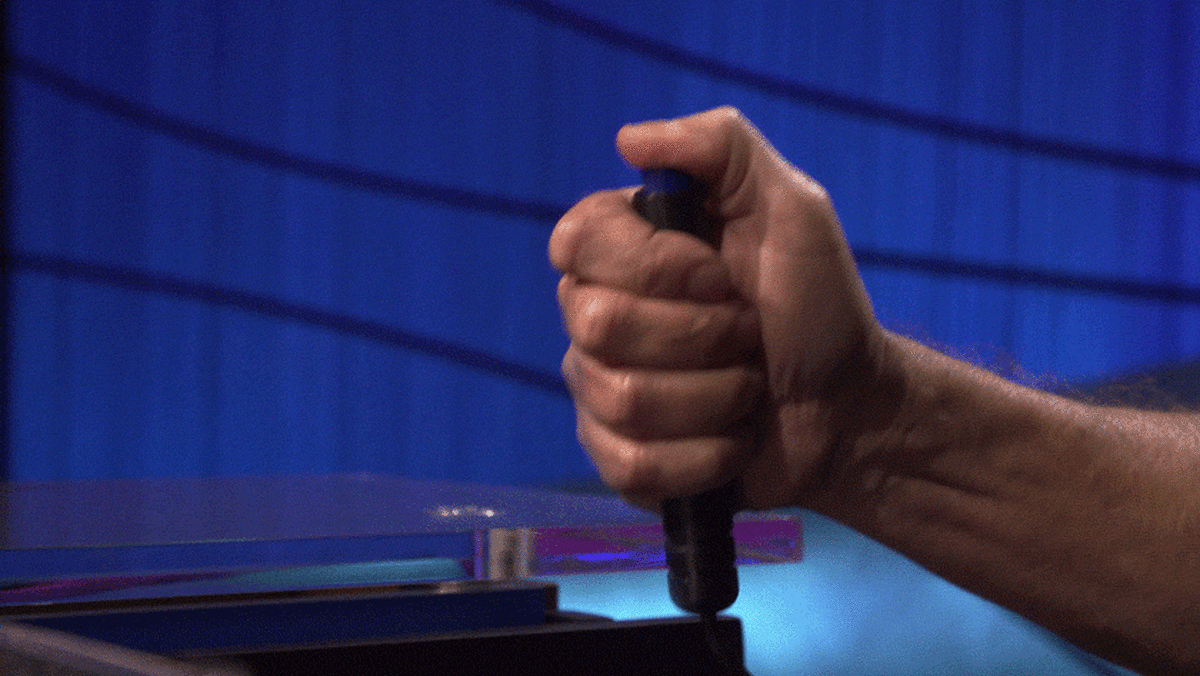Featured J!Buzz
Jeopardy! contestants are known for their ability to access a seemingly limitless amount of information at lightning speed, but having the reflexes to ring in at the proper time – and ahead of your competitors – is what makes Jeopardy! a game. Multiday champs and one-time challengers will all tell you the same thing: It’s all about mastering the signaling button.
Here’s how it all goes down:
The first thing to know is that the host must finish reading the clue before the signaling devices are activated. In the early days of the show, contestants could ring in at any time and that led to a lot of quick guesses, negative scores and general confusion. Now, as soon as the host has finished reading the last syllable in the last word, a staff member sitting offstage presses a button that serves two functions.

First, it illuminates a series of lights on both sides of the gameboard to let the contestants know that their devices are now armed and that they can ring in. For viewers at home, the text of the clue is still on screen. So unless you’ve been to a taping of the show, you’ve never seen these indicator lights. Here’s what they look like:

Simultaneously, the system that controls the signaling devices is engaged. The system works by detecting the first signal it receives after the system is armed and ignoring subsequent signals. Then, it shows who has rung in first by lighting up that contestant’s podium.

If a contestant attempts to ring in before the gameboard lights activate, the system locks out their signal for a quarter of a second. This quarter-second lockout works like a “digital policeman” that keeps the game flowing.
So, the game is flowing; what happens next?
If a contestant responds correctly, the stage tech resets the system for the next clue. If a response is ruled incorrect by the host, then the system is re-armed. The other two contestants’ signaling devices are then reset and the gameboard lights up to let them know that they may now respond.
Why do I see some contestants hitting the buzzer, but not getting in?
With such critical timing and so much at stake, there’s always a chance that all three contestants may attempt to ring in before the system is armed. That’s why we instruct contestants to keep hitting the buzzer until they see the confirmation light on their podium or until the host calls on one of them.
With the precise engineering of the signaling devices, we’ve taken great care to ensure that the game runs smoothly and that every contestant gets an equal chance to respond. Hopefully, it helps them to relax a bit, knowing that lightning reflexes and flexible thumbs are just as important to the game as having staggering amounts of knowledge about a vast array of subjects.
Simple, right?





